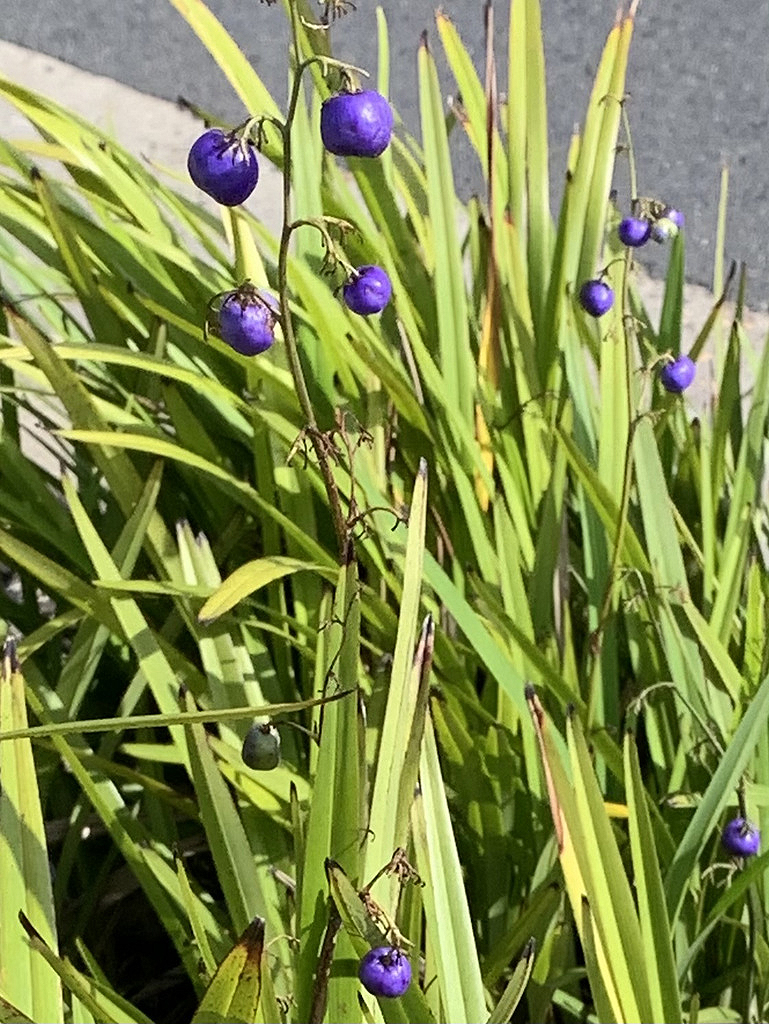Blue Flax Lily or Dianella caerulea is an Australian native perennial plant with edible berries found across the eastern states of Australia and Tasmania. Here’s how to grow it, eat it and drink it.

Blue Flax Lily – Photo © The Gourmantic Garden
Dianella caerulea is commonly known as the blue flax lily, blueberry lily, or paroo lily. It’s a hardy and low maintenance ornamental plant with attractive foliage and edible blue/purple berries. The Australian native plant is commonly seen around Sydney in public spaces as it’s a popular choice by some councils.

Ripe Berries – Photo © The Gourmantic Garden
Blue Flax Lily or Dianella caerulea grows up to 1 metre in height and up to 2 metres wide. Its long and narrow leaves are fibrous and have been used traditionally in basket making.
The evergreen plant produces flowers in spring followed by blue-purple edible berries with tiny seeds. The berries have a delicious sweet-tart note and once the seeds are chewed, they release a nutty flavour. The berry season is very short, lasting around 6 weeks but the plant is well worth growing.
GROW IT
How to Grow Blue Flax Lily
Blue Flax Lily can be grown from seed but it’s easier to buy a small plant from an indigenous nursery. It grows in full sun and shady spots and can tolerate dry periods once established. With the advantage of being a low maintenance plant, you can plant it and forget about it until the flowering season.
As it grows from a rhizome, it can be divided to produce more plants and if you trim it down, it will grow back.
EAT IT
NOTE: There are various type of dianella and not all are edible so be extremely careful if you’re foraging for the berries as some are known to be poisonous. We recommend harvesting berries from your own plants which you’ve grown from seed or bought from a reliable seller.
Culinary uses of Blue Flax Lily

Dianella Caerulea Berries – Photo © The Gourmantic Garden
The combination of the sweet-tart and nutty flavour of the berries is unique and well worth experimenting with. When the berries are in season, these can be harvested, washed and used as a substitute for blueberries but keep in mind, the flavour is different. They can be used in desserts, jams or simply added to ice cream.
DRINK IT
The vibrant berries can be used to create a syrup. They can also be macerated in a spirit to use in cocktails or to turn into a liqueur. The berries can be muddled and used in shaken cocktails. The flavour pairs well with white spirits such gin, vodka and white rum.
Want to Know More?
You’ll find more information on how to grow dianella, which varieties to try, how to pair it with food and spirits, and how to use dianella in cocktails including a full recipe in my 260+ page digital book GROW YOUR OWN COCKTAIL GARDEN available now.


